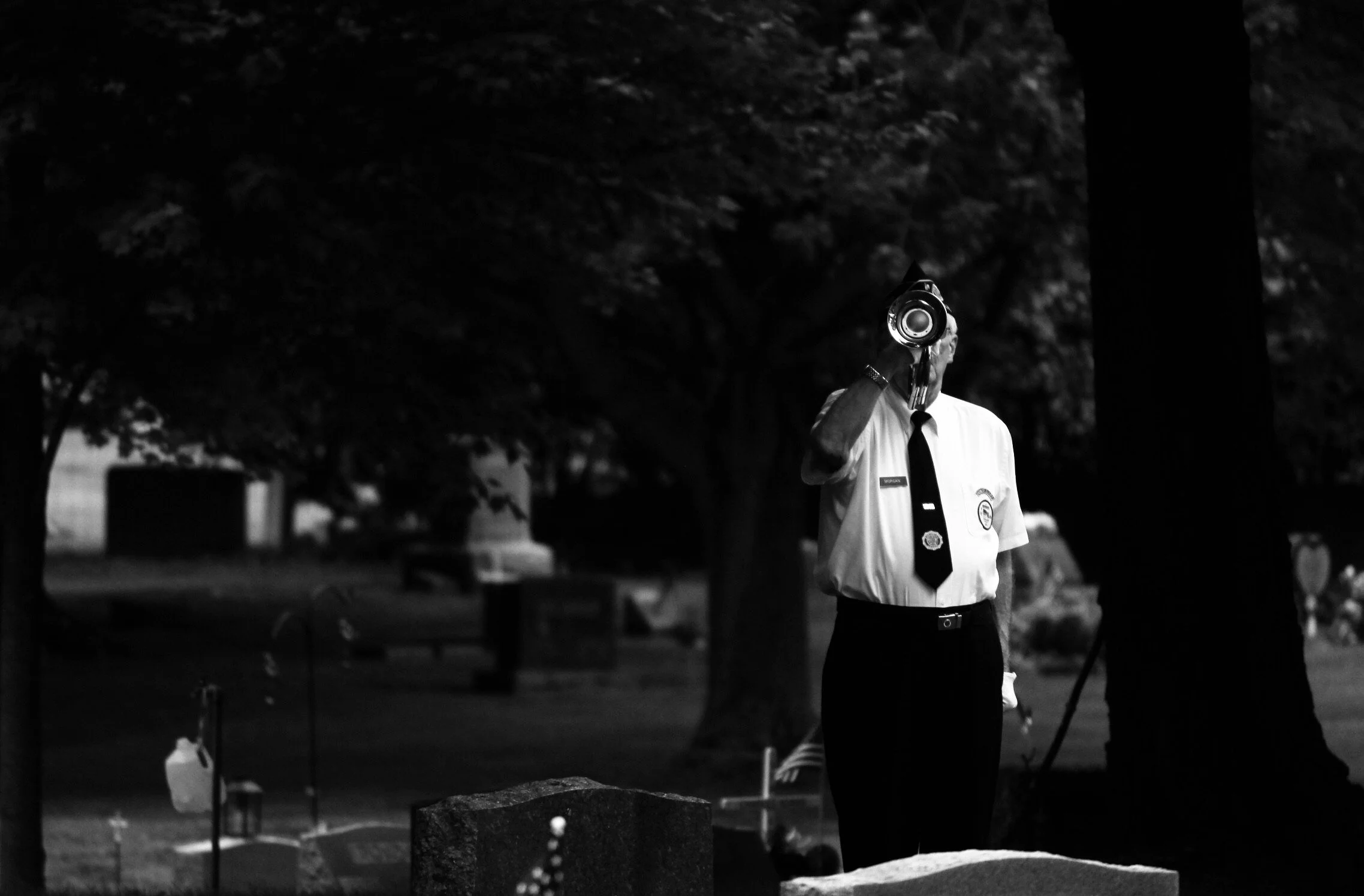How do YOU Honor Your Loved Ones Who Passed?
In the United States, traditions surrounding death and mourning are as diverse as the cultural backgrounds and religious beliefs of the people who observe them. These practices offer families ways to honor their loved ones, find closure, and support each other during a time of loss. While customs can differ widely from family to family, here are some of the most common ways people in the U.S. honor their loved ones after they pass away.
1. Funeral or Memorial Service
One of the most familiar traditions in the United States is the funeral or memorial service, typically held shortly after a person passes away. This formal gathering allows family, friends, and acquaintances to come together, share memories, and honor the life of the deceased. The specifics of the service can vary widely depending on personal and religious preferences.
• Funerals: Often held within a few days of death, funerals may include a viewing or wake where loved ones have a chance to see the deceased and say goodbye. Funerals are usually more traditional and solemn, often including eulogies, prayers, or sermons.
• Memorial Services: Unlike funerals, memorial services don’t always involve the presence of the body and can take place weeks or even months after the person has passed. These services focus more on celebrating the person’s life and can take place in a church, a funeral home, a community center, or even outdoors.
Both types of services are an important part of the grieving process, as they allow loved ones to come together to reflect on shared memories, pay respects, and offer comfort to each other.
2. Wakes and Visitations
A wake or visitation is a time for friends and family to gather, pay their respects, and support each other before the funeral service. Wakes, which can be traced back to Catholic and other religious traditions, tend to be more informal than funerals and are often held in the family home or a funeral home.
• Some families may choose to have a viewing, where the body is present in an open casket. This gives mourners a chance to say a final goodbye.
• Others may opt for a closed-casket visitation or simply gather to remember the deceased in a setting that feels comfortable and familiar.
These gatherings provide an opportunity for friends and family to connect and share memories of the person they’ve lost, and for many, they offer an intimate setting for reflection and healing.
3. Burial and Cremation Traditions
After the funeral or memorial, families typically choose between burial and cremation based on personal, cultural, or religious beliefs. Each option has its own traditions and customs:
• Burial: Many people prefer a traditional burial, often accompanied by a graveside service. These services may include a final prayer, reading, or moment of silence, offering loved ones one last opportunity to be near the deceased before the burial.
• Cremation: Cremation has become more common in the U.S., and families have options for what to do with the ashes. Some choose to scatter them in a meaningful place, while others keep them in an urn at home. Others may inter the ashes in a columbarium or family plot, allowing loved ones a place to visit.
The choice between burial and cremation can be deeply personal and meaningful, with both practices offering a way for loved ones to create a lasting memory.
4. Celebration of Life
Over recent years, more families have been choosing to hold a “celebration of life” rather than a traditional funeral. Celebrations of life tend to be less formal and focus on honoring the joy and beauty of the deceased’s life rather than mourning their loss.
• These events can include shared stories, laughter, and personal anecdotes, celebrating what made the deceased unique and special.
• Families may play the deceased’s favorite music, share a slideshow or video of their life, or incorporate elements of their personality and interests into the gathering.
This approach offers a positive, uplifting way to remember a loved one and helps friends and family find comfort in celebrating happy memories.
5. Repast or Reception
Following the funeral or memorial service, it’s common for the family to host a repast or reception, offering food and refreshments as a way for friends and family to connect. The repast often serves as an extension of the grieving process, where people gather to share stories, reminisce, and support one another.
• Food and Hospitality: In many cultures, food is seen as a way of bringing people together and offering comfort. In the U.S., friends and extended family might provide dishes for the repast, giving the immediate family one less thing to worry about.
• Casual Environment: The repast is usually more relaxed, allowing guests to gather in a less formal environment to talk, remember, and share emotions.
This gathering allows loved ones to bond and find comfort in each other’s presence, a vital part of coping with grief.
6. Religious Traditions
Many people in the United States observe religious customs after a loved one dies. Each religion has its own rituals, prayers, and practices, offering a structured way for families to cope with loss.
• Catholic Mass of Christian Burial: For many Catholic families, the Mass of Christian Burial is a central tradition, often held in a church. This ceremony includes prayers, hymns, and blessings, as well as a final rite of committal at the graveside.
• Jewish Shiva: In the Jewish faith, mourning rituals often include sitting shiva, a seven-day mourning period during which family members receive visitors in their home. It’s a time for prayers, sharing stories, and honoring the deceased in a supportive environment.
• Islamic Janazah: In Islam, Janazah (funeral prayer) is performed to honor the deceased, followed by a quick burial. Mourners gather to pray together, reflecting on the person’s life and faith.
• Hindu Antyesti (Last Rites): In Hinduism, death rituals, known as Antyesti, or last rites, hold significant importance. After a person’s passing, the body is typically cremated, as Hindus believe that cremation helps release the soul from the physical body, aiding its journey to the afterlife. The eldest son or a close male relative often performs the rites, which can include chanting prayers, placing sacred items around the deceased, and lighting the funeral pyre. Ashes are sometimes scattered in a river or sacred body of water. Mourning often continues for about 10-13 days, with family members observing various rituals, praying, and often refraining from certain social activities to honor the deceased’s memory.
Religious traditions provide structure and support, offering a sense of familiarity and meaning for many families as they process their loss.
7. Obituary and Memorial Donations
Announcing a loved one’s passing through an obituary has long been a tradition in the U.S., and many families still choose to publish these notices in local newspapers or online. An obituary can be a touching way to share the person’s life story, their accomplishments, and their contributions to the community.
• In recent years, families often ask for memorial donations to a specific charity or cause that was meaningful to the deceased. This offers a way for mourners to honor the deceased’s memory in a way that can benefit others.
8. Honoring on Anniversaries and Holidays
Many families continue to honor their loved one long after their passing. The anniversary of their death, birthdays, and holidays can be emotionally significant times for family members.
• Some families visit the gravesite on these special dates, leaving flowers, mementos, or even sharing a meal in remembrance.
• On holidays, families may incorporate special traditions, like setting a place at the dinner table or lighting a candle in their honor.
Honoring a loved one can take many forms, and for some, these traditions become a source of comfort and a way to keep their memory alive.
In the end, these varied practices and traditions offer a meaningful framework for grief, remembrance, and healing. Each family finds their own path, honoring their loved one in a way that reflects their unique connection and the life that was lived. Whether through religious ceremonies, personal gatherings, or ongoing remembrances, these traditions help families navigate loss and find peace in memory.

